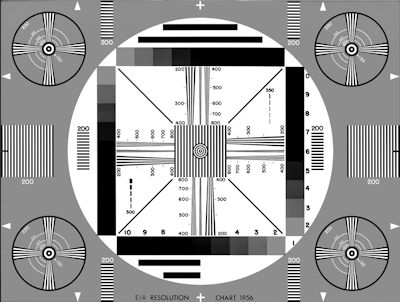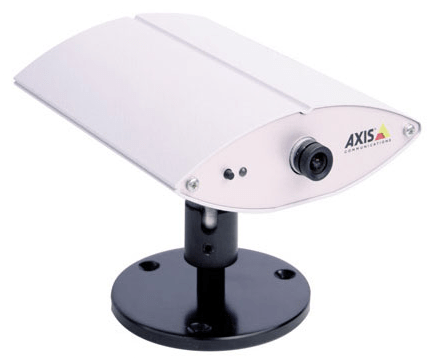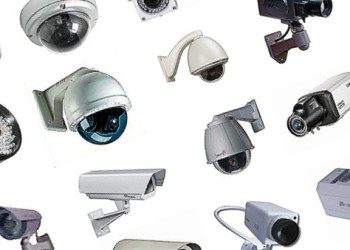Evolution from Closed Circuit TV to Ubiquitous IP Camera Surveillance
By Bob Mesnik
From the early beginnings of Closed Circuit Television (CCTV), it was somewhat controversial. It was designed to increase our security and safety, but does it threaten our privacy? How has video surveillance changed over the years? This article reviews the history of surveillance and how it has evolved into a technology that has become part of our lives.

History
Video surveillance is not new; it has been around for quite a while. One of the first recorded application for closed circuit television system (CCTV) was back in 1942. It was used to view the launch of V2 rockets in Germany.
In the US, commercial surveillance applications began around 1947. In 1957 a number of companies such as General Precision Labs (GPL division), provided CCTV camera systems for education, medical and industrial applications.
Early CCTV equipment and TV broadcast equipment shared technology. Both camera systems supported grey-scale video (not color) and measured and defined performance using NTSC standards. Note the USA used NTSC (525 lines at 60 fps) while Europe used PAL (625 lines at 50 fps). A camera with 525 vertical scan lines, actually had only 480 visible lines.

There is a difference between scan lines and lines of resolution. The TV line of resolution is defined as one black and one white line, so the actual resolution was less than 240 TV lines of resolution.
To measure resolution, the camera was pointed at the EIA-1956 resolution chart which was viewed on a monitor (with hopefully better resolution than the camera). It primarily measured the horizontal resolution because the vertical resolution was restricted by the fixed number of vertical lines (525 in NTSC). This was a very subjective measurement, because TV engineers determined the maximum resolution as the point where they could not discern converging lines.
Color cameras became available in the 1950s, and there was a debate on whether or not color was better for surveillance. Black-white (or grey-scale) cameras provided better resolution and low light sensitivity, while color made it easier to identify someone by the clothes they were wearing.
The early camera systems were primarily used for real time viewing, because of the lack of reliable video recording systems. There was some reel to reel tape solutions available from Sony and Ampex, but they were not easy to use. The introduction of videocassette recorders (VCR) in 1970 led to the increased popularity of video surveillance.
Evolution of Technology

The introduction of network attached IP cameras was a significant technology change for the CCTV industry. Axis introduced the first IP cameras in 1996. These new cameras used the Ethernet network for communication rather than coax cable. Video signals were now sent as digital encoded signals instead of analog signals.
The new communication method proved to be a difficult concept for the older analog security dealers to handle. It took a while for the new technology to become popular. It was only after computer dealers (who understood computers and networks) started selling IP camera systems, that the market began to grow.
The first IP cameras provided 4CIF (704 x 480 pixels) or VGA (640 x 480 pixel) resolution. This was similar video resolution to the older analog cameras. One of the first megapixel IP cameras was introduced in 2002 by IQinvision. This 1.3 megapixel (1280 x 1024 pixels) cameras provided over four times the resolution of the older VGA cameras. Other companies such as Arecont Vision, introduced 2-megapixel cameras in 2004. The high resolution of the IP camera provided a dramatic improvement over the older analog camera technology.
It took some time for the traditional CCTV camera manufacturers to get on board with the new IP technology. By 2003, major surveillance camera companies such as Samsung, Sony, and Panasonic started to embrace the new technology. By 2007 they developed high performance, megapixel IP cameras. Even though Axis dominated the market because of their early entry, the new megapixel IP cameras from the CCTV companies quickly outperformed the Axis cameras. For example, Samsung (Hanwha Techwin) and Sony, developed IP cameras with better performance that are priced more aggressively. Take a look at our camera review, which describes the results of our testing.
By 2014 there were more IP cameras sold than analog surveillance cameras. Today, it is estimated that over 30 million surveillance cameras are used in just the United States, with over 100 million cameras worldwide (analog and IP cameras). It’s amazing how far we have come in the last 20 years.
The Changing Market
Today there are a very wide range of IP cameras available. The market is now split between low-cost consumer grade cameras, and professional surveillance cameras.

Consumer Cameras
In 2011, Lower cost cameras were introduced by large Chinese camera companies such as Hikvision and Dahua. These lower performance IP cameras have led to a dramatic increase in home IP surveillance systems.
Lower cost IP camera systems and ease of installation have made it possible for large organizations to self-install instead of relying on CCTV installers. This has dramatically changed the market and increased the number of IP surveillance camera systems.
High Performance Professional Cameras
In the last couple of years high performance IP cameras were introduced for the professional security market. This included ultra-high resolution cameras, those with better low light and wide dynamic range, and those that included very long range lenses.
In 2015 very high resolution 4K cameras were introduced. Sony was one of the first to develop the sensor required for this new class of camera. 4K camera specifications are somewhat confused because the term was originally used for the display of video on TVs and monitors. IP cameras that provide at least 4,000 horizontal pixels, are considered to be 4K, but there are actually a number of different 4K IP cameras available. For example, there is the 8-megapixel Axis 1428, the Samsung 12-megapixel SNB-9000 camera, and the 20-megapixel SNC-VM772R camera from Sony. All considered 4K cameras, but all with different capability.
It is important to note that these very high resolution cameras require much better lenses than are used in the lower resolution cameras. Be careful, when you see a relatively low priced 4K camera, you are probably not getting the best lens. The lenses for these cameras are a significant part of the overall cost of the camera and can cost well over $2,000. If you find an IP camera that costs under $1,000 it probably won’t provide the resolution you expect.
High performance cameras also include very long range IP cameras that can view objects that are miles away in total darkness. Not only can IP cameras be used for typical surveillance applications, they can be placed on top of mountains to help detect forest fires, or placed underwater to view sea life.
More Than Just Surveillance

Surveillance is everywhere, and its growing in popularity. Now almost anyone can install IP camera systems. Camera systems watch our homes, schools, businesses and cities. They are being used by law enforcement agencies around the world. When we watch the news today, we are not surprised to see video from the latest robbery or terror attack. Surveillance has also become part of our mobile world. Anyone with a smart phone is now able to capture video.
Is this pervasive surveillance good or bad? The American Civil Liberties Union (ACLU) continues to be concerned about public privacy. In spite of these concerns, the general feeling is that surveillance is helping us become more safe and secure. Today CCTV is no longer “closed circuit” it is available to all of us, and it is improving our safety and security. Not only does it help law enforcement arrest villains, it also helps to make our lives safer.
If you need help selecting your surveillance technology, please contact us at 1-800-431-1658 in the USA, or ever 914-944-3425 everywhere else, or use our contact form.